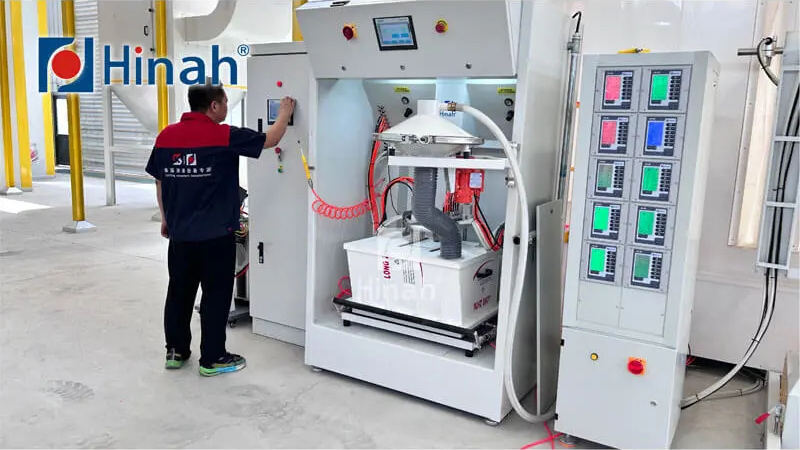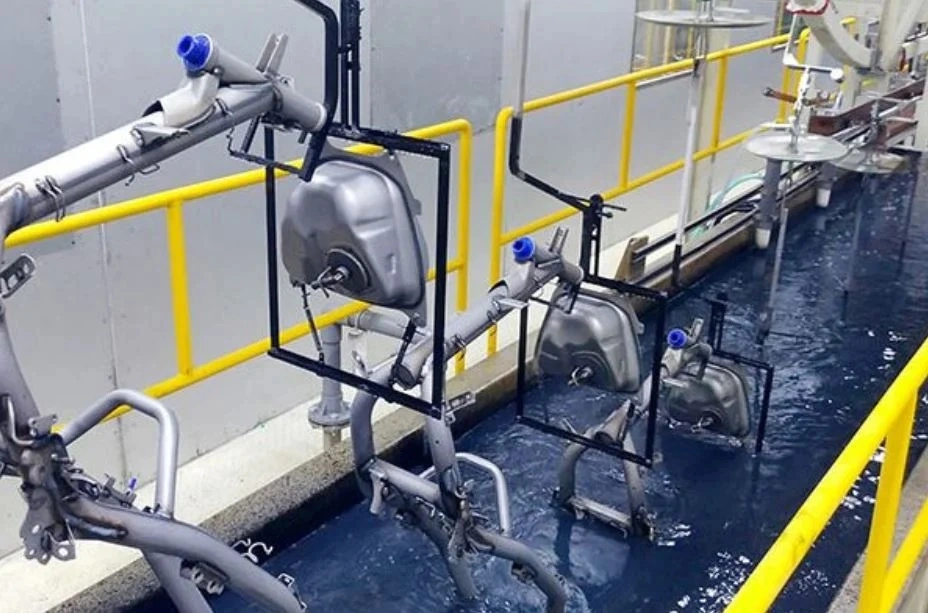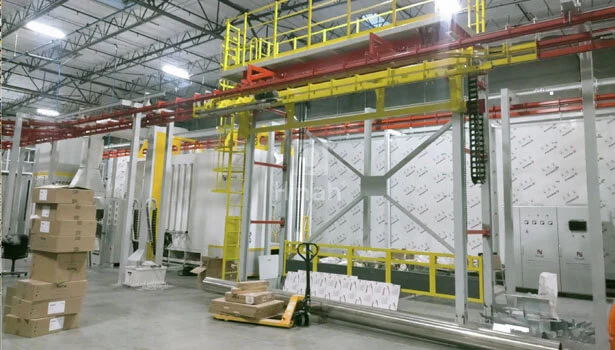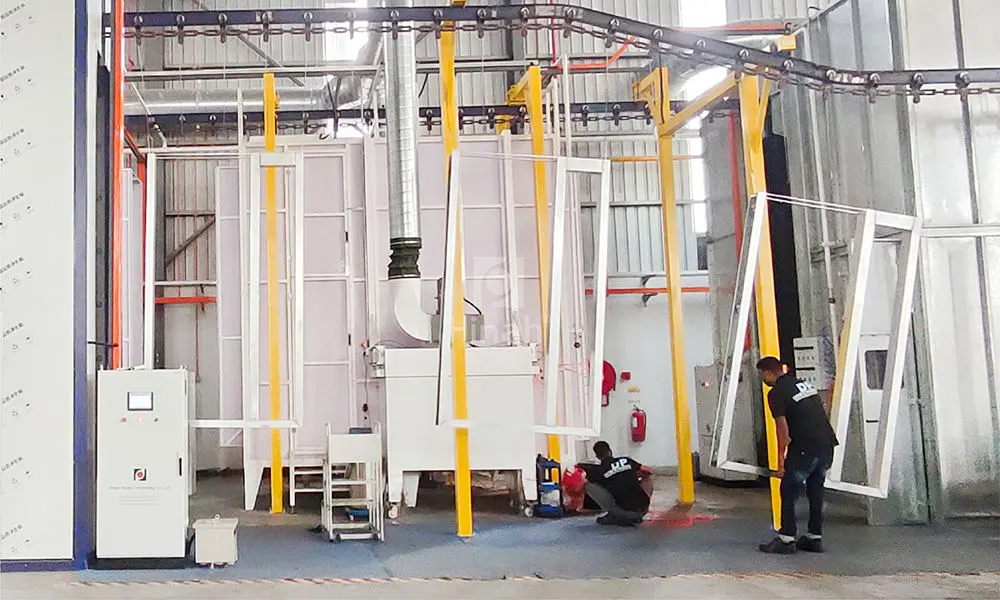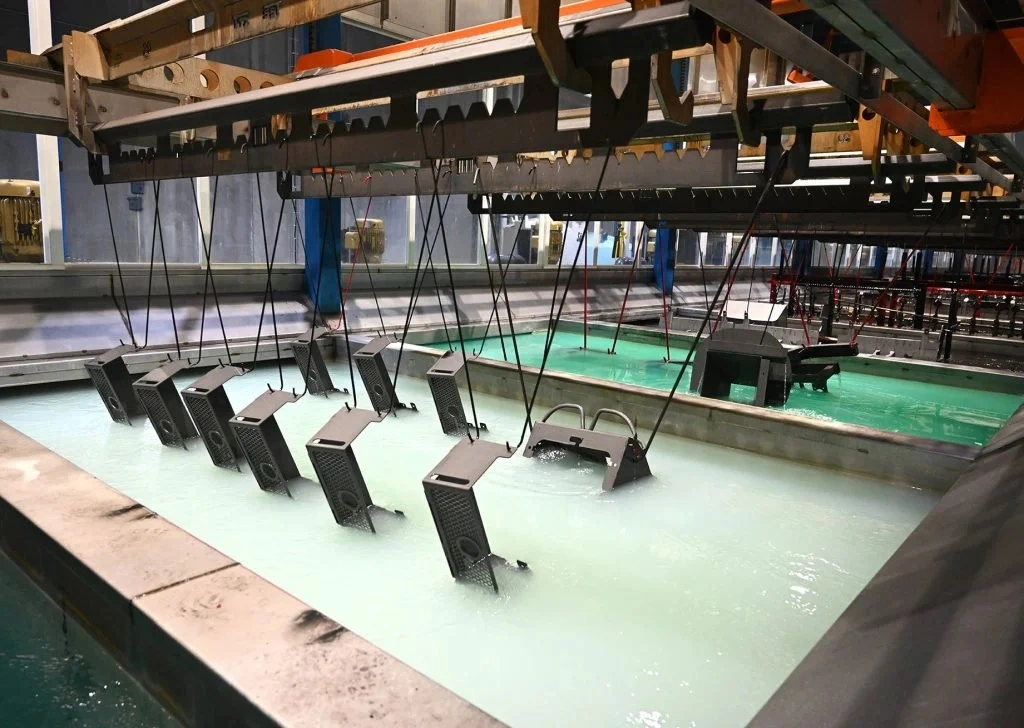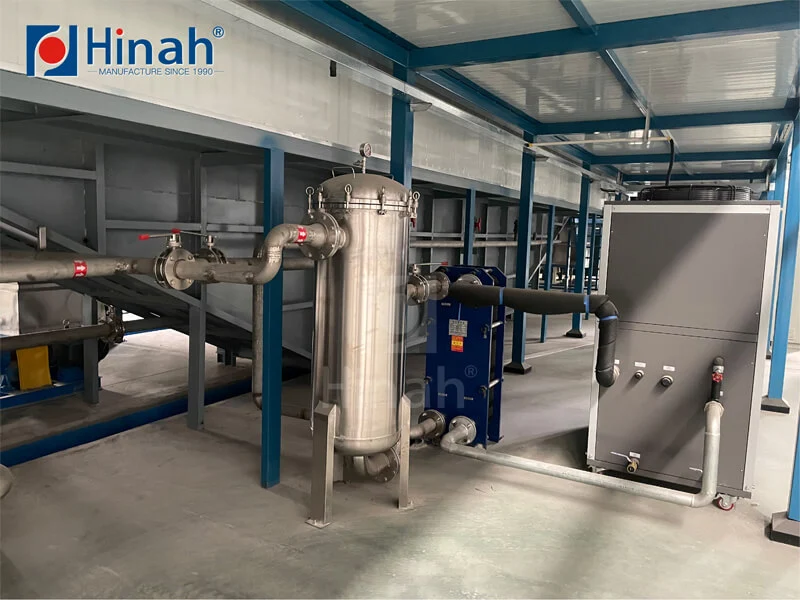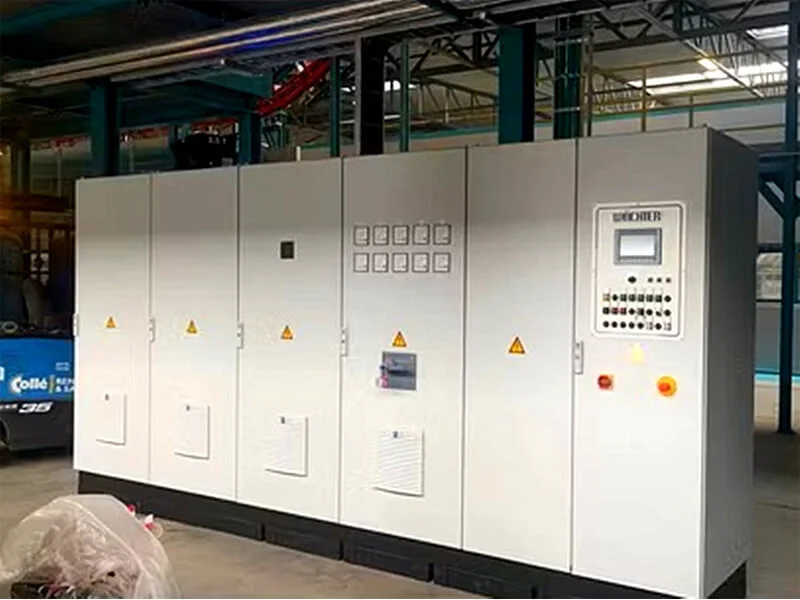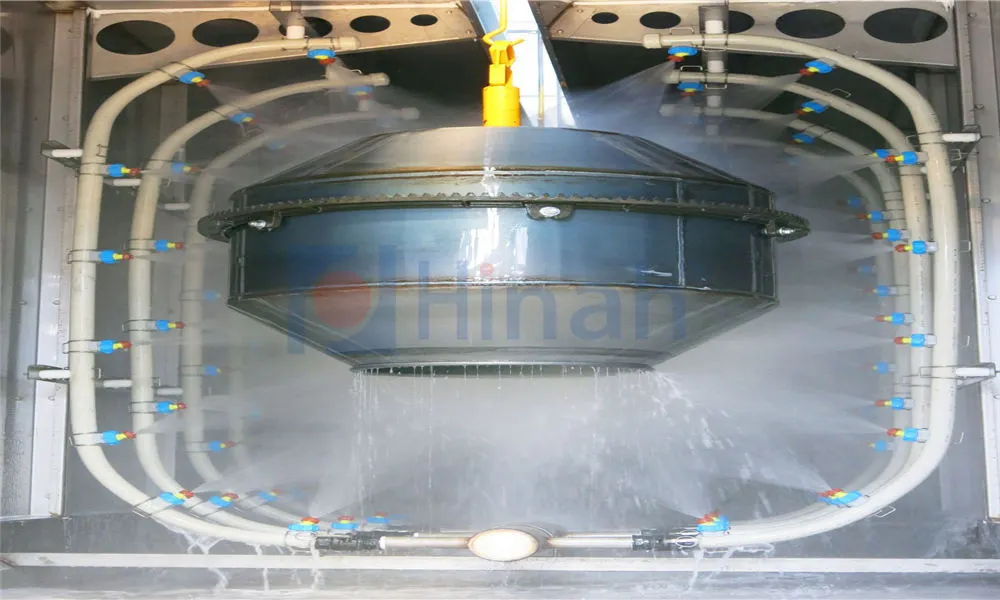In the world of industrial finishing, efficiency and consistency are paramount. At the heart of any successful operation lies a robust powder coating conveyor system. These intricate networks are far more than just a means of moving parts; they are the central nervous system that synchronizes the entire process, from pre-treatment to curing. A well-designed paint line conveyor system ensures a smooth, continuous flow, maximizing throughput and ensuring a flawless, high-quality finish on every single product. This article delves into the critical components of these systems, with a special focus on the often-overlooked heroes: the paint line conveyor hooks and paint line conveyor chain, and explores common challenges that can disrupt your production line.
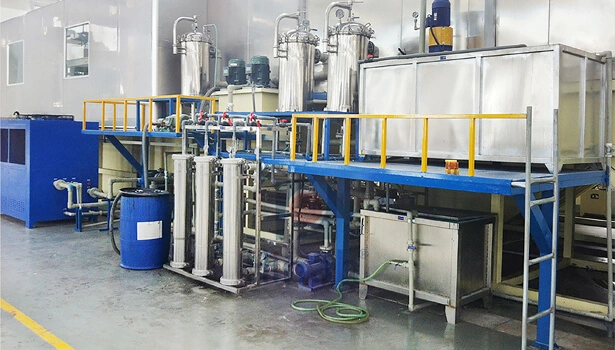
What is a Powder Coating Conveyor System?
A Powder Coating Conveyor is an integrated material handling system specifically engineered to transport parts through the various stages of the powder coating process. This typically includes pre-treatment (cleaning, rinsing, phosphating), drying, the powder spray booth, and the curing oven. The primary function of the conveyor is to present each part consistently to each station, ensuring uniform application and cure.
The most common type is the Overhead Conveyor System. In this configuration, parts are suspended from trolleys that ride along an I-beam or enclosed track mounted above the production floor. This design is exceptionally space-efficient, keeping the floor clear for operators and other equipment, and is ideal for accommodating the vertical rise needed for oven entry and exit. The system's flexibility allows for complex layouts with horizontal and vertical curves, straight sections, and lift-and-carry sections to navigate the facility.
The Anatomy of a Paint Line Conveyor System
A typical system is a symphony of interconnected parts, each playing a vital role. Understanding these components is key to understanding the system as a whole.
The Workhorse: Paint Line Conveyor Chain
The paint line conveyor chain is the literal driving force of the entire operation. It's a heavy-duty chain, often a type of rivetless chain or enclosed track chain, designed to withstand harsh environments. It must be resistant to high temperatures from the cure oven, chemicals from the pre-treatment stages, and the constant physical stress of carrying a loaded weight.
Types: Common chains include chain-on-edge (COE) for heavy loads and enclosed track chains for smoother operation and better containment of lubricants and contaminants.
Importance: The integrity of the chain is non-negotiable. A single broken link can halt the entire production line, leading to significant downtime and lost revenue. Proper lubrication and regular inspection are critical for its longevity.
The Critical Interface: Paint Line Conveyor Hooks
If the chain is the workhorse, the paint line conveyor hooks are the indispensable hands. These fixtures are responsible for securely holding the products as they journey through the line. Their design is far from simple; it is a specialized science.
Function: Hooks must provide a stable and secure attachment point to prevent parts from falling. More importantly, they must be designed to minimize "shadowing" – areas where the part itself blocks the powder from reaching the attachment point, leading to an uncoated spot.
Design and Maintenance: Hooks come in various standard and custom shapes (e.g., "C," "J," or custom mandrels) to accommodate different part geometries. Over time, hooks accumulate coating buildup. If not regularly stripped and cleaned, this buildup insulates the hook, preventing proper electrical grounding in the spray booth and leading to poor powder attachment and eventual fall-off. This buildup also adds unnecessary weight, straining the entire Overhead Conveyor System.
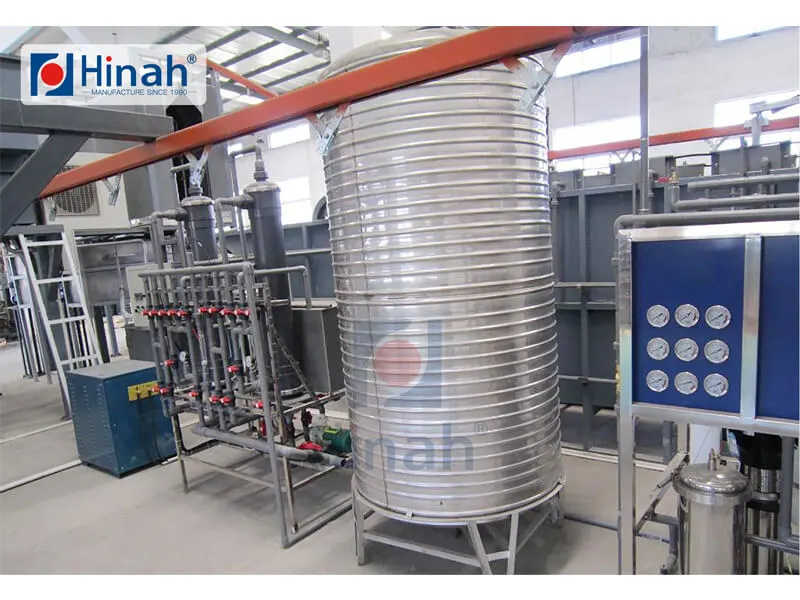
The Role of the Overhead Conveyor System in Powder Coating
The Overhead Conveyor System is the preferred architecture for most powder coating operations for several compelling reasons:
Space Optimization: By utilizing overhead space, it maximizes valuable floor area for other machinery, part staging, and operator movement.
Process Flow: It creates a natural, continuous loop that is perfect for the sequential stages of powder coating. The vertical design allows for the "elevated" entry and exit required for high-temperature curing ovens, containing heat effectively.
Versatility: These systems can be designed with multiple dips, rises, and branches to create complex paths, integrating washers, dry-off ovens, spray booths, and curing ovens into a single, seamless process.
Drip Management: Suspending parts overhead allows for natural drip-off in the pre-treatment and liquid coating stages, reducing contamination and mess.
Common Problems and Maintenance Challenges
Even the most robust paint line conveyor system is susceptible to issues. Proactive maintenance is the key to preventing costly downtime.
Conveyor Chain Wear and Failure: The constant movement, load, and environmental exposure cause natural wear. Lack of proper lubrication is the primary culprit for premature failure, leading to stretched chains, worn drive sprockets, and potential chain derailment or breakage.
Excessive Coating Buildup on Hooks: This is perhaps the most frequent operational headache. As mentioned, buildup on paint line conveyor hooks causes two major problems:
Grounding Issues: Powder coating requires an electrostatic charge. A heavily coated hook acts as an insulator, breaking the electrical circuit. This prevents powder from being attracted to the part, resulting in poor coverage and powder simply falling off.
Added Weight and Stress: A thick layer of baked-on powder can add significant weight. This extra load strains the chain, the trolleys, the drive motor, and the entire structure of the Overhead Conveyor System, leading to higher energy costs and accelerated wear.
Poor System Alignment and Tracking: Over time, the track of an Overhead Conveyor System can fall out of alignment. This misalignment causes the chain to rub against the track, creating friction, increasing wear, and potentially causing the chain to jump off its guides, bringing production to an abrupt halt.
Drive Motor and Control Issues: The drive is the heart of the system. Motor failures, gearbox issues, or problems with the variable frequency drive (VFD) controls can cause inconsistent line speeds or a complete shutdown. Inconsistent speed directly affects coating thickness and cure time, compromising quality.
Trolley and Wheel Failure: The trolleys, with their small wheels, carry the entire load. These wheels can seize up due to a lack of lubrication or exposure to coating overspray and chemicals. A seized trolley creates drag, straining the system, and can damage the track.
Improper Hook Selection and Design: Using the wrong type of hook for a specific part can lead to unstable hanging, parts falling off, or excessive shadowing that requires costly manual touch-up. Investing in custom-designed fixtures for high-volume parts is often a worthwhile endeavor.
Best Practices for a Reliable Powder Coating Conveyor
Implement a Preventive Maintenance Schedule: This is non-negotiable. Regularly scheduled inspections of the chain, track, drives, and trolleys can identify small problems before they become catastrophic failures.
Establish a Hook Stripping Program: Implement a dedicated process for regularly removing coating buildup from paint line conveyor hooks. This can be done through high-temperature burn-off ovens, chemical stripping baths, or mechanical blast cleaning. The frequency depends on your production volume.
Use Proper Lubrication: Use a conveyor lubricant that is compatible with your environment (e.g., dry-film lubricants for areas near the spray booth to avoid contaminating parts). Automate lubrication if possible for consistency.
Train Your Operators: Ensure line operators know what to look for—strange noises, visible wear, hanging issues—and empower them to report problems immediately.
Partner with Experts: Work with reputable manufacturers and integrators of powder coating conveyor systems for design, troubleshooting, and sourcing replacement parts like the correct paint line conveyor chain.
A well-maintained and properly specified powder coating conveyor system is the unsung hero of a productive and profitable finishing operation. It is a complex interplay between the powerful Overhead Conveyor System structure, the durable paint line conveyor chain, and the meticulously designed paint line conveyor hooks. By understanding the role of each component and implementing a rigorous preventive maintenance program to address common issues like hook buildup and chain wear, you can ensure your Powder Coating Conveyor operates smoothly, minimizing downtime and consistently delivering a perfect finish. Investing in your conveyor system is an investment in the very backbone of your production.


